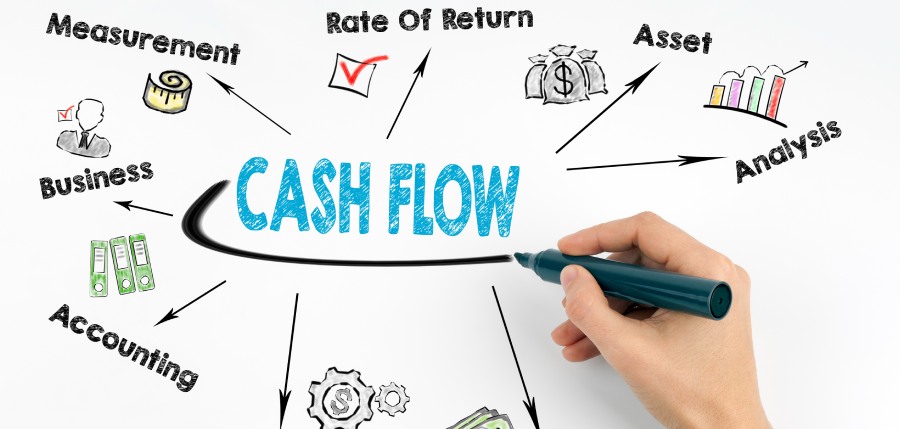
What Is Customer Satisfaction Survey
Customer satisfaction surveys are the backbone of understanding how well your business meets the needs and expectations of your customers. These surveys provide invaluable insights, guiding you toward improvements that can enhance customer loyalty and drive growth. But what exactly are customer satisfaction surveys, and why are they so essential?
Understanding Customer Satisfaction Surveys
A customer satisfaction survey is a tool used to gather customer feedback about their experiences with your products or services. These surveys can be conducted through various channels, including online forms, emails, phone calls, or even face-to-face interactions. The primary goal is to measure customer satisfaction and identify improvement areas.
Why Use Customer Satisfaction Surveys?
Customer satisfaction surveys offer several benefits. They help you understand your customers’ perspectives, identify strengths and weaknesses, and make data-driven decisions to improve your business. Regularly conducting these surveys can keep you attuned to your customers’ needs and foster long-term loyalty.
Types of Customer Satisfaction Surveys
There are different types of customer satisfaction surveys, each serving a unique purpose. Let’s explore some common ones.
1. Net Promoter Score (NPS)
The Net Promoter Score measures customer loyalty by asking how likely customers are to recommend your business to others. It’s a straightforward survey that categorizes respondents into Promoters, Passives, and Detractors.
2. Customer Satisfaction Score (CSAT)
The Customer Satisfaction Score asks customers to rate their satisfaction with your product or service on a scale, usually from 1 to 5 or 1 to 10. This score provides a snapshot of overall customer satisfaction.
3. Customer Effort Score (CES)
The Customer Effort Score measures how easy it is for customers to interact with your business. It focuses on the effort required to resolve an issue or complete a purchase.
Designing an Effective Customer Satisfaction Survey
Creating an effective customer satisfaction survey requires careful planning. Here are some key elements to consider.
Clear Objectives
Define the purpose of your survey. Are you looking to improve a specific product, evaluate customer service, or gauge overall satisfaction? Clear objectives guide the design of your survey.
Simple and Concise Questions
Keep your questions simple and to the point. Avoid jargon or complex language that could confuse respondents. Use a mix of question types, such as rating scales, multiple-choice, and open-ended questions.
Balanced Length
While it’s essential to gather enough information, lengthy surveys can lead to respondent fatigue. Aim for a balanced length that covers all necessary areas without overwhelming participants.
Personalization
Personalize your surveys to make them more engaging. Use the customer’s name and reference specific interactions or purchases. This shows that you value their individual experience.
Analyzing Survey Results
Collecting data is only the first step. Analyzing the results is crucial to uncover actionable insights.
Quantitative Analysis
Quantitative data from rating scales and multiple-choice questions can be analysed statistically. Look for trends and patterns to identify strengths and areas needing improvement.
Qualitative Analysis
Qualitative data from open-ended questions provides deeper insights. Use text analysis tools to identify common themes and sentiments. These insights can guide more nuanced improvements.
Turning Insights into Action
The ultimate goal of customer satisfaction surveys is to drive improvement. Here’s how to turn insights into action.
Prioritize Issues
Identify the most critical issues affecting customer satisfaction. Address these first to have the most significant impact.
Implement Changes
Make the necessary changes based on your survey results. Whether it’s improving a product, enhancing customer service, or streamlining processes, taking action shows customers that their feedback matters.
Communicate with Customers
Let your customers know that you’ve heard their feedback and are making changes. This transparency builds trust and encourages continued engagement.
Leveraging Technology for Customer Satisfaction Surveys
Technology plays a crucial role in conducting and analyzing customer satisfaction surveys. Here are some tools that can enhance your efforts.
Online Survey Tools
Use platforms like SurveyMonkey, Type form, or Google Forms to create and distribute surveys easily. These tools offer various templates and analytics features.
Customer Relationship Management (CRM) Systems
Integrate surveys with your CRM system, such as Salesforce or HubSpot, to track customer feedback alongside other customer data. This integration provides a holistic view of the customer experience.
Data Analytics Software
Advanced analytics tools like Tableau, Power BI, or Google Analytics can help you visualize and interpret survey data. These insights enable data-driven decision-making.
The Impact of Regular Customer Satisfaction Surveys
Conducting regular customer satisfaction surveys can have a profound impact on your business. Here’s why consistency matters.
Tracking Progress
Regular surveys allow you to track progress over time. You can see if changes are having the desired effect and make adjustments as needed.
Adapting to Changing Needs
Customer expectations and market conditions change. Regular surveys help you stay ahead of these changes and adapt your strategies accordingly.
Building Customer Relationships
Frequent feedback requests show customers that you value their opinion. This ongoing dialogue strengthens customer relationships and fosters loyalty.
How To Create A Customer Satisfaction Survey
Before you start designing your survey, it’s essential to define your objectives. Knowing what you want to achieve will guide your questions and structure.
Identify Key Areas
Determine the specific areas you want to assess. Are you focusing on product quality, customer service, or overall satisfaction? Clear objectives ensure your survey covers all necessary aspects.
Set Clear Goals
Establish what you hope to gain from the survey. Do you want to identify pain points, measure customer loyalty, or gather ideas for new products? Clear goals will shape your survey’s design and analysis.
Choose the Right Survey Type
Different survey types serve various purposes. Selecting the appropriate type is crucial for obtaining the insights you need.
Customer Satisfaction Score (CSAT)
CSAT surveys ask customers to rate their satisfaction with your product or service. This score provides a quick snapshot of overall satisfaction.
Net Promoter Score (NPS)
NPS measures customer loyalty by asking how likely customers are to recommend your business. It categorizes respondents into Promoters, Passives, and Detractors.
Customer Effort Score (CES)
CES focuses on how easy it is for customers to interact with your business. It measures the effort required to resolve an issue or complete a purchase.
Design Effective Survey Questions
The quality of your survey questions determines the usefulness of your feedback. Well-crafted questions provide clear, actionable insights.
Keep Questions Simple and Clear
Use straightforward language. Avoid jargon or technical terms that might confuse respondents. Simple questions lead to better responses.
Use a Mix of Question Types
Incorporate different question types to capture a range of feedback. Use rating scales, multiple-choice, and open-ended questions to gather both quantitative and qualitative data.
Examples of Effective Questions
- How satisfied are you with our product/service?
- How would you rate your experience with our customer support?
- What improvements would you suggest?
Keep the Survey Concise
Long surveys can lead to respondent fatigue. Aim for brevity while ensuring you cover all necessary areas. Typically, a survey should take no longer than 5-10 minutes to complete.
Distribute Your Survey
How you distribute your survey affects response rates. Choose methods that are convenient for your customers.
Online Surveys
Online surveys are popular due to their convenience. Use platforms like SurveyMonkey, Type form, or Google Forms to create and distribute surveys easily.
Email Surveys
Email surveys reach customers directly. Ensure your email invites are engaging and clearly explain the survey’s purpose and importance.
In-App Surveys
For digital products, in-app surveys can capture feedback at the moment of interaction. This method often results in higher response rates.
Analyze Survey Results
Collecting data is just the first step. Analyzing the results effectively turns raw data into actionable insights.
Quantitative Analysis
Quantitative data from rating scales and multiple-choice questions can be analysed statistically. Look for trends and patterns to identify strengths and weaknesses.
Qualitative Analysis
Qualitative data from open-ended questions provide deeper insights. Use text analysis tools to identify common themes and sentiments.
Combine Data Sources
Combining data from different sources offers a comprehensive view. This holistic approach helps you understand the full picture of customer satisfaction.
Act on Feedback
The ultimate goal of your survey is to drive improvements. Acting on feedback shows customers that their opinions matter.
Prioritize Issues
Identify the most critical issues affecting customer satisfaction. Address these first for the most significant impact.
Implement Changes
Based on your analysis, make necessary changes to your products, services, or processes. Continuous improvement keeps customers satisfied and loyal.
Communicate with Customers
Let customers know you’ve heard their feedback and are making changes. This transparency builds trust and encourages ongoing engagement.
Leverage Technology for Better Surveys
Technology can enhance your survey efforts, making the process more efficient and insightful.
Use Survey Tools
Online tools like SurveyMonkey, Typeform, and Google Forms offer various templates and analytics features. These tools simplify survey creation and distribution.
Integrate with CRM Systems
Integrating surveys with Customer Relationship Management (CRM) systems like Salesforce or HubSpot provides a holistic view of customer interactions. This integration helps tailor your approach to each customer.
Utilize Data Analytics
Advanced analytics tools like Tableau, Power BI, or Google Analytics help you visualize and interpret survey data. These insights enable data-driven decision-making.
The Impact of Regular Surveys
Conducting regular customer satisfaction surveys is vital for maintaining a competitive edge. Here’s why consistency matters.
Track Progress
Regular surveys allow you to track progress over time. See if changes are effective and make adjustments as needed.
Adapt to Changing Needs
Customer expectations and market conditions change. Regular surveys help you stay ahead of these changes and adapt your strategies accordingly.
Build Strong Customer Relationships
Frequent feedback requests show customers you value their opinions. This ongoing dialogue strengthens relationships and fosters loyalty.
Why Customer Satisfaction Surveys Are Important
One of the primary reasons customer satisfaction surveys are crucial is that they help you understand your customers’ needs. By gathering feedback directly from your customers, you can identify what they value most about your products or services and where you may be falling short.
Gathering Direct Feedback
Surveys provide a direct line of communication between you and your customers. This feedback is invaluable because it comes straight from the source. You learn exactly what your customers think about their experiences with your business.
Identifying Pain Points
Customer satisfaction surveys highlight areas where your business may not be meeting customer expectations. This allows you to address issues before they escalate, improving the overall customer experience.
Driving Business Improvements
Customer satisfaction surveys offer insights that can guide strategic business decisions. They help you prioritize improvements and allocate resources more effectively.
Enhancing Products and Services
By analyzing survey results, you can identify specific areas of your products or services that need enhancement. This targeted approach ensures that improvements are based on actual customer needs and preferences.
Improving Customer Service
Feedback on customer service interactions can reveal training needs and process improvements. Ensuring your team provides exceptional service can significantly boost customer satisfaction and loyalty.
Measuring Customer Loyalty
Customer satisfaction surveys often include metrics like the Net Promoter Score (NPS), which measures customer loyalty. Understanding how likely your customers are to recommend your business provides a clear indication of your overall customer satisfaction.
Calculating Net Promoter Score
The NPS asks customers to rate how likely they are to recommend your business on a scale from 0 to 10. Responses categorize customers into Promoters, Passives, and Detractors. Subtracting the percentage of Detractors from the percentage of Promoters gives you your NPS.
Benefits of High NPS
A high NPS indicates strong customer loyalty and satisfaction. Promoters not only return themselves but also bring in new customers through referrals. Monitoring your NPS over time helps you gauge the effectiveness of your customer satisfaction strategies.
Enhancing Customer Retention
Satisfied customers are more likely to stay loyal to your brand. Customer satisfaction surveys help you understand what keeps your customers coming back and what might drive them away.
Addressing Customer Concerns
Surveys give customers an opportunity to voice their concerns. Addressing these concerns promptly shows that you value their feedback and are committed to improving their experience.
Building Trust and Loyalty
When customers see that their feedback leads to real changes, they feel valued and appreciated. These builds trust and fosters long-term loyalty, which is essential for business growth.
Gaining Competitive Advantage
In today’s competitive market, understanding and acting on customer feedback can set you apart from your competitors. Customer satisfaction surveys provide insights that can help you stay ahead.
Benchmarking Performance
By regularly conducting surveys, you can benchmark your performance over time. This helps you understand where you stand in the market and identify areas for improvement.
Adapting to Market Trends
Customer preferences and market trends constantly evolve. Surveys help you stay attuned to these changes, allowing you to adapt your strategies and offerings accordingly.
Improving Marketing Strategies
Customer feedback can also enhance your marketing efforts. By understanding what resonates with your customers, you can tailor your messaging and campaigns more effectively.
Identifying Key Selling Points
Surveys reveal what customers value most about your products or services. Highlighting these key selling points in your marketing materials can attract new customers and retain existing ones.
Crafting Targeted Campaigns
Feedback from surveys can help you segment your audience and craft targeted marketing campaigns. Personalized messaging that addresses specific customer needs and preferences can drive higher engagement and conversion rates.
Leveraging Technology for Better Insights
Technology plays a crucial role in conducting and analyzing customer satisfaction surveys. Using the right tools can enhance the quality and efficiency of your feedback process.
Online Survey Tools
Platforms like SurveyMonkey, Typeform, and Google Forms make it easy to create and distribute surveys. These tools offer various templates and analytics features that help you gather and analyse feedback effectively.
Data Analytics Software
Advanced analytics tools like Tableau, Power BI, and Google Analytics help you visualize and interpret survey data. These insights enable data-driven decision-making and continuous improvement.
CRM Integration
Integrating surveys with Customer Relationship Management (CRM) systems like Salesforce or HubSpot provides a holistic view of customer interactions. This integration helps you track feedback and actions across the customer journey.
How Do Companies Measure Customer Satisfaction
Before diving into the measurement techniques, it’s essential to grasp what customer satisfaction truly means. Customer satisfaction is the degree to which a product or service meets or exceeds customer expectations. It’s a reflection of how happy your customers are with every interaction they have with your brand. High customer satisfaction often leads to repeat business, positive word-of-mouth, and higher revenues.
Why Measuring Customer Satisfaction Matters
Measuring customer satisfaction is not just a box to tick; it provides actionable insights that can significantly impact your business strategy. Here are some reasons why it matters:
- Retention: Happy customers are more likely to stick around.
- Brand Loyalty: Satisfied customers often become brand advocates.
- Competitive Advantage: Understanding your strengths and weaknesses can set you apart from competitors.
- Improvement: Identifying areas of improvement helps in refining your products or services.
Methods of Measuring Customer Satisfaction
1. Customer Satisfaction Surveys
One of the most direct methods is to ask your customers how they feel through surveys. These can take various forms:
- Questionnaires: Send out detailed questionnaires via email or post-purchase. Keep questions clear and concise to encourage participation.
- Online Surveys: Utilize platforms like SurveyMonkey or Google Forms to reach a wider audience. Online surveys are quick and easy for customers to complete.
- In-App Surveys: For businesses with apps, in-app surveys provide immediate feedback.
Pro Tip: Always include open-ended questions to gain deeper insights into customer opinions.
2. Net Promoter Score (NPS)
The Net Promoter Score is a widely used metric that measures customer loyalty. It asks a single question: “On a scale of 0-10, how likely are you to recommend our product/service to a friend or colleague?” Based on the responses, customers are categorized as:
- Promoters (9-10): Loyal enthusiasts.
- Passives (7-8): Satisfied but unenthusiastic customers.
- Detractors (0-6): Unhappy customers who can damage your brand through negative word-of-mouth.
The NPS is calculated by subtracting the percentage of Detractors from the percentage of Promoters.
3. Customer Satisfaction Score (CSAT)
The Customer Satisfaction Score is another popular metric. It typically involves asking customers to rate their satisfaction with your product or service on a scale of 1-5 or 1-10. CSAT is versatile and can be used after any customer interaction, such as a support call or a purchase.
4. Customer Effort Score (CES)
The Customer Effort Score measures how easy it is for customers to do business with you. It asks, “How much effort did you personally have to put forth to handle your request?” This score helps identify friction points in your customer journey.
5. Social Media Monitoring
In the digital age, social media is a treasure trove of customer feedback. Monitoring platforms like Twitter, Facebook, and Instagram can provide real-time insights into customer sentiment. Tools like Hootsuite and Sprout Social can help track mentions and sentiments across various social media channels.
6. Online Reviews and Ratings
Websites like Yelp, Google Reviews, and Trustpilot host thousands of customer reviews. Analyzing these reviews can offer valuable insights into customer satisfaction levels and common issues.
7. Focus Groups
Focus groups involve gathering a small group of customers to discuss their experiences with your product or service. This method provides qualitative data and a deeper understanding of customer perceptions.
8. Customer Interviews
Personal interviews can provide rich, detailed feedback. Conducting one-on-one interviews allows you to ask follow-up questions and gain insights that surveys might miss.
Implementing Customer Feedback
Collecting data is just the first step. The real value lies in analyzing this data and implementing changes based on the feedback. Here’s how you can do it:
1. Data Analysis
Use analytical tools to identify patterns and trends in the feedback. Look for recurring themes or issues that need addressing.
2. Actionable Insights
Convert data into actionable insights. For example, if multiple customers mention slow response times, consider training your customer service team to improve efficiency.
3. Continuous Improvement
Customer satisfaction is not a one-time effort. Continuously monitor feedback and make iterative improvements. Regularly update your surveys and measurement techniques to stay aligned with customer expectations.
4. Communicate Changes
Let your customers know that you value their feedback and are making improvements. This can enhance their trust and loyalty to your brand.
How Often Should You Conduct A Customer Satisfaction Survey
Customer feedback is the lifeblood of any customer-centric organization. It provides insights into what you’re doing right and where you need to improve. Regular feedback helps you:
- Identify Trends: Recognize patterns in customer behaviour and preferences.
- Enhance Products and Services: Make data-driven improvements to your offerings.
- Boost Customer Loyalty: Show customers you value their opinions, fostering loyalty.
- Stay Competitive: Keep up with market demands and stay ahead of competitors.
Factors Influencing Survey Frequency
Determining how often to conduct customer satisfaction surveys depends on several factors. Each business is unique, and the ideal survey frequency varies based on the following considerations:
1. Industry Standards
Different industries have different benchmarks for survey frequency. For instance, in fast-paced sectors like e-commerce or technology, customer preferences and market conditions can change rapidly, necessitating more frequent surveys. In contrast, industries with longer product life cycles, like automotive or real estate, may require less frequent feedback.
2. Customer Interaction Points
Consider the various touch points your customers have with your business. These interactions are opportunities to gather feedback. Common touch points include:
- Post-Purchase: Immediately after a purchase to gauge satisfaction with the buying experience.
- Post-Support: After a customer service interaction to assess the quality of support.
- Regular Intervals: Monthly, quarterly, or annually to capture ongoing satisfaction and trends.
3. Business Objectives
Your business goals should guide your survey frequency. If you’re launching a new product, more frequent surveys can help you understand its reception and make necessary adjustments. On the other hand, if your objective is to maintain steady growth, annual surveys might suffice.
4. Customer Base Size
The size of your customer base also plays a role. Larger businesses with diverse customer segments might need to survey more often to get a representative sample. Smaller businesses might find less frequent surveys sufficient to capture customer sentiment.
Recommended Survey Frequencies
1. Post-Purchase Surveys
Conducting surveys immediately after a purchase is highly effective. It captures customers’ impressions while the experience is still fresh. These surveys can provide insights into the buying process, product quality, and initial satisfaction. A post-purchase survey should be short and focused, ensuring a high response rate.
Frequency: After every purchase or transaction.
2. Post-Support Surveys
After a customer interacts with your support team, follow up with a survey to assess the quality of the service provided. This helps identify strengths and weaknesses in your support processes and ensures continuous improvement.
Frequency: After each customer support interaction.
3. Quarterly Surveys
Quarterly surveys are excellent for tracking customer satisfaction trends over time. They provide a regular check-in without overwhelming your customers. This frequency allows you to make strategic adjustments throughout the year based on feedback.
Frequency: Every three months.
4. Annual Surveys
Annual surveys offer a comprehensive view of customer satisfaction and loyalty. They can be more detailed and cover a broad range of topics, including overall satisfaction, brand perception, and suggestions for improvement. This frequency is suitable for capturing long-term trends and making strategic decisions.
Frequency: Once a year.
Tips for Effective Customer Satisfaction Surveys
1. Keep Surveys Short and Focused
Customers are more likely to complete surveys that are short and to the point. Focus on key areas that impact their experience, such as product quality, customer service, and overall satisfaction. Aim for a survey length of 5-10 questions to maximize response rates.
2. Use a Mix of Question Types
Incorporate a variety of question types, including multiple-choice, rating scales, and open-ended questions. This approach provides both quantitative data and qualitative insights. Open-ended questions, in particular, can reveal in-depth customer thoughts and suggestions.
3. Incentivize Participation
Encouraging customers to participate in surveys can be challenging. Offering incentives such as discounts, gift cards, or entry into a prize draw can boost response rates. Ensure the incentive is appealing enough to motivate customers to take the time to provide feedback.
4. Analyse and Act on Feedback
Collecting feedback is just the first step. Analyze the data to identify patterns and actionable insights. Use this information to make informed decisions and implement changes that improve customer satisfaction. Communicate these improvements to your customers to show that their feedback is valued and acted upon.
5. Close the Loop
Follow up with customers who provide feedback to let them know how their input is being used. This “closing the loop” approach demonstrates that you value their opinions and are committed to making positive changes. It also encourages future participation in surveys.
What Is Customer Satisfaction Survey – Key Takeaways
- Customer satisfaction surveys help businesses understand how well they meet customer needs and expectations.
- These surveys gather feedback about customer experiences with products or services through various channels.
- Surveys measure customer satisfaction and identify areas for improvement.
- Benefits include understanding customer perspectives, identifying strengths and weaknesses, and making data-driven decisions.
- Common types of surveys include Net Promoter Score (NPS), Customer Satisfaction Score (CSAT), and Customer Effort Score (CES).
- NPS measures customer loyalty by asking how likely customers are to recommend the business.
- CSAT asks customers to rate their satisfaction on a scale.
- CES measures the effort required for customers to interact with the business.
- Effective surveys have clear objectives, simple and concise questions, balanced length, and personalization.
- Quantitative data from surveys can be analyzed statistically to identify trends and patterns.
- Qualitative data from open-ended questions provides deeper insights into customer sentiments.
- Analyzing and acting on survey results drive improvements and show customers their feedback matters.
What Is Customer Satisfaction Survey – FAQ
Q. What is a customer satisfaction survey?
A customer satisfaction survey is a tool used to gather feedback from customers about their experiences with a company’s products or services. It helps businesses understand customer satisfaction levels and identify areas for improvement.
Q. Why are customer satisfaction surveys important?
Customer satisfaction surveys are vital because they provide direct insights from customers. These insights help businesses improve their products, services, and customer interactions. Regular surveys can enhance customer loyalty, drive growth, and keep a business competitive.
Q. What types of customer satisfaction surveys are commonly used?
Common types of customer satisfaction surveys include the Net Promoter Score (NPS), Customer Satisfaction Score (CSAT), and Customer Effort Score (CES). NPS measures customer loyalty, CSAT rates overall satisfaction, and CES evaluates the effort required for customer interactions.
Q. How can businesses create effective customer satisfaction surveys?
To create effective surveys, businesses should define clear objectives, keep questions simple and concise, and use a mix of question types. Personalizing surveys and keeping them short can increase response rates. Analyzing feedback and acting on it is crucial for continuous improvement.
Q. How should businesses act on the results of customer satisfaction surveys?
Businesses should analyse survey data to identify trends and actionable insights. Prioritize addressing critical issues affecting customer satisfaction. Implement necessary changes and communicate these improvements to customers, showing that their feedback is valued and leads to positive changes.
Search
Categories
Related Articles

What Is Cash Flow Management In Business
Cash flow management is the lifeblood of any business, large or small. It’s the art of balancing the money coming in with the money going out, ensuring that a business can meet its obligations and thrive. Mastering cash flow management empowers companies not only to survive but to strategically plan for future growth. Let’s dive…
Read More
What Is Stress And Stress Management
In the modern world, stress has become a constant companion for many of us. It infiltrates our daily lives, impacting our health, relationships, and overall well-being. Understanding stress and learning how to manage it can transform how we experience life’s challenges, leading to a more balanced and fulfilling existence. Understanding Stress Stress is the body’s…
Read More
How To Manage Stress Management
Stress is a constant companion in our fast-paced world. It can affect our health, relationships, and overall quality of life. However, understanding and managing stress can transform how we experience daily challenges. This article explores practical strategies for stress management, guiding you towards a calmer, more balanced life. Understanding Stress Stress is the body’s response…
Read More
Why Stress Management Is Important
In the intricate dance of life, where numerous demands tug at our attention, the importance of managing stress cannot be overstated. It is the silent undercurrent that can dictate the quality of our days and the tranquillity of our minds. Understanding the depth of stress management’s impact can enlighten and empower us to lead more…
Read More
What Are The Benefits Of Stress Management
In our brisk and often bustling lives, stress management is not merely a practice but a necessity. Understanding and harnessing the profound benefits of stress management can transform our daily experiences, leading to a richer, more fulfilling life. This article delves into the essential advantages of managing stress effectively and provides insights into how it…
Read More
What Does The Bible Say About Stress Management
In our journey through life, stress is an inevitable companion. It can cloud our days and unsettle our nights. Yet, the ancient texts of the Bible offer a wealth of wisdom on managing stress, urging us to find peace and strength beyond our earthly troubles. This article explores the biblical perspective on stress management, offering…
Read More




